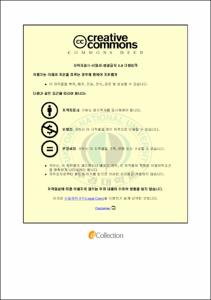압축기 협조제어 방식에 의한 터보냉동기의 고효율 제어
- Abstract
- Energy saving of air conditioner has become an essential factor because of manhattanization and gigantism lately. centrifugal water chiller is being used for center coordination in general commercial buildings and large buildings, and because it's feature of using electric motor magnifies the power consumption, the efficiency of Energy saving-associated air conditioner is being noticed. The centrifugal water chiller now installed for full load, but load change is large depends on season and time in large buildings, and also the efficiency of part load became important lately because a study shows that Centrifugal Water Chiller is generally operated for part load rather than full load, which means full time use of air cooler. However, studies on centrifugal water chiller, especially on the modelling and planning to escalate the efficiency of centrifugal water chiller, are not common domestically or also globally. We here discuss the temperature control of the Centrifugal Water Chiller with four compressors to counteract on various part loads. Minimum load can be controlled down to 5% if the heat load is controlled by four compressors. In this paper, adequate control of compressor operating number considering the feature of part load and of the operation of compressor of system to attain the stability and for high-efficiency operation becomes very important. Here we suggest an operating number logic for high-efficiency control at part load to supplement the defects of existing controller plan which is designed only considering the operation at full load. For attainment of systemic stability of Centrifugal Water Chiller at part load and improvement of efficiency, we attempt to plan the operating number control logic depends on additional operation and stand still of compressor at part load based on PI feedback controller based on practical transfer function modelling as compressor cooperative control system. Cooperative control system is planned with the Start_up Controller which induces the compressor Demand as fixed slope to lessen the energy consumption when the compressor is operated, and with Down Controller which retrogrades the demand of the Lead compressor to fixed PR(Pressure Ratio) to facilitate the operation of the Lag compressor, considering the systemic feature during the additional operation and stand still of compressor and the operation feature. We suggested an operating number control logic of compressor to operate necessary number of compressor depends on the load change by using several compressors at centrifugal water chiller, and examined the validity of the suggested compressor cooperative control system, which is the operating number control system, by experimental study and the conformity of the simulation. Also, we examined the improvement of settling time, control level, COP in suggested cooperative control system rather than in existing control system.
- Issued Date
- 2014
- Awarded Date
- 2014. 2
- Type
- Dissertation
- Publisher
- 부경대학교
- Affiliation
- 대학원
- Department
- 대학원 냉동공조공학과
- Advisor
- 정석권
- Table Of Contents
- 제1장 서 론 ------------------------------------------------------------------------ 1
1.1 연구 배경 ---------------------------------------------------------------------- 1
1.2 연구 내용 ---------------------------------------------------------------------- 5
제2장 터보냉동기의 특성과 제어 -------------------------------------------------- 7
2.1 터보 냉동기의 특성 ------------------------------------------------------ 9
2.2 제어 원리 ------------------------------------------------------------------- 11
제3장 압축기 대수제어 로직과 PI 제어기 ------------------------------- 13
3.1 압축기 대수제어 --------------------------------------------------------- 13
3.1.1 대수제어의 원리 ----------------------------------------------------- 14
3.1.2 압축기 협조제어 로직 -------------------------------------------- 19
3.2 PI 제어기 설계 및 실험 ---------------------------------------------- 24
3.2.1 PI 피드백 제어기 원리 ------------------------------------------- 24
3.2.2 제어대상의 모델링 및 PI 제어기 설계 --------------------- 25
제4장 협조제어 로직 설계 및 대수제어 시뮬레이션 --------------- 31
4.1 협조제어의 필요성 ------------------------------------------------------ 31
4.2 협조제어 로직 설계 ------------------------------------------------------- 33
4.3 대수제어 시뮬레이션 ----------------------------------------------------- 36
제5장 실험 장치 및 실험 방법 --------------------------------------------- 41
5.1 실험 장치 ------------------------------------------------------------------- 41
5.2 실험 방법 ------------------------------------------------------------------- 44
제6장 실험 결과 및 고찰 ----------------------------------------------------- 46
6.1 협조제어의 타당성 검증 ------------------------------------------------ 46
6.2 협조제어 로직의 실험 결과 및 분석 -------------------------------- 50
제7장 협조제어와 증발압력제어의 성능 비교 ------------------------ 58
7.1 증발압력제어 성능 -------------------------------------------------------- 58
7.2 협조제어와 증발압력제어 성능 비교 ------------------------------- 61
제8장 결 론 ---------------------------------------------------------------------- 63
참고문헌 --------------------------------------------------------------------------- 66
Appendix --------------------------------------------------------------------------- 68
학술대회 발표 및 학술지 게재 논문 List ------------------------------- 76
- Degree
- Master
- Files in This Item:
-
-
Download
 압축기 협조제어 방식에 의한 터보냉동기의 고효율 제어.pdf
기타 데이터 / 4.78 MB / Adobe PDF
압축기 협조제어 방식에 의한 터보냉동기의 고효율 제어.pdf
기타 데이터 / 4.78 MB / Adobe PDF
-
Items in Repository are protected by copyright, with all rights reserved, unless otherwise indicated.